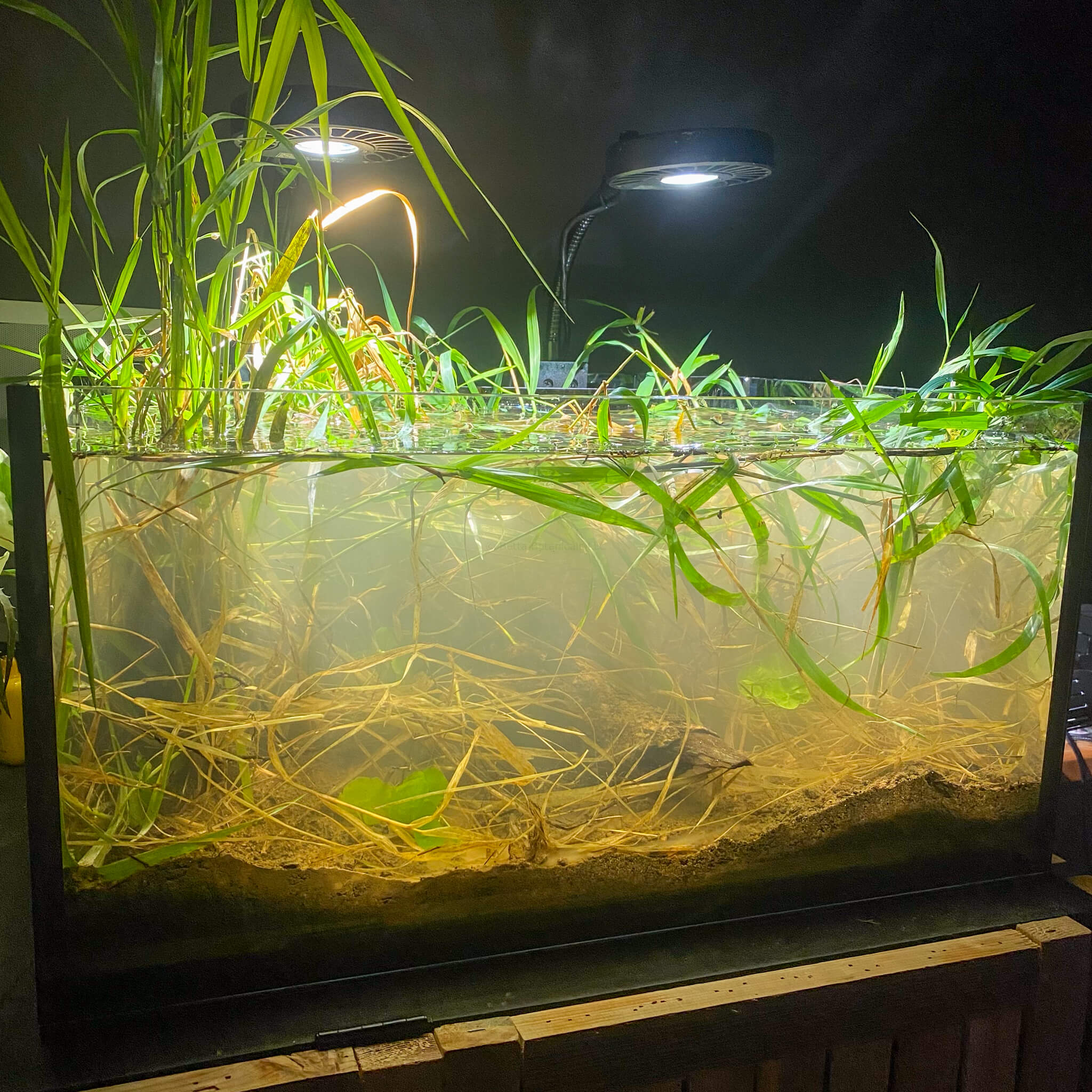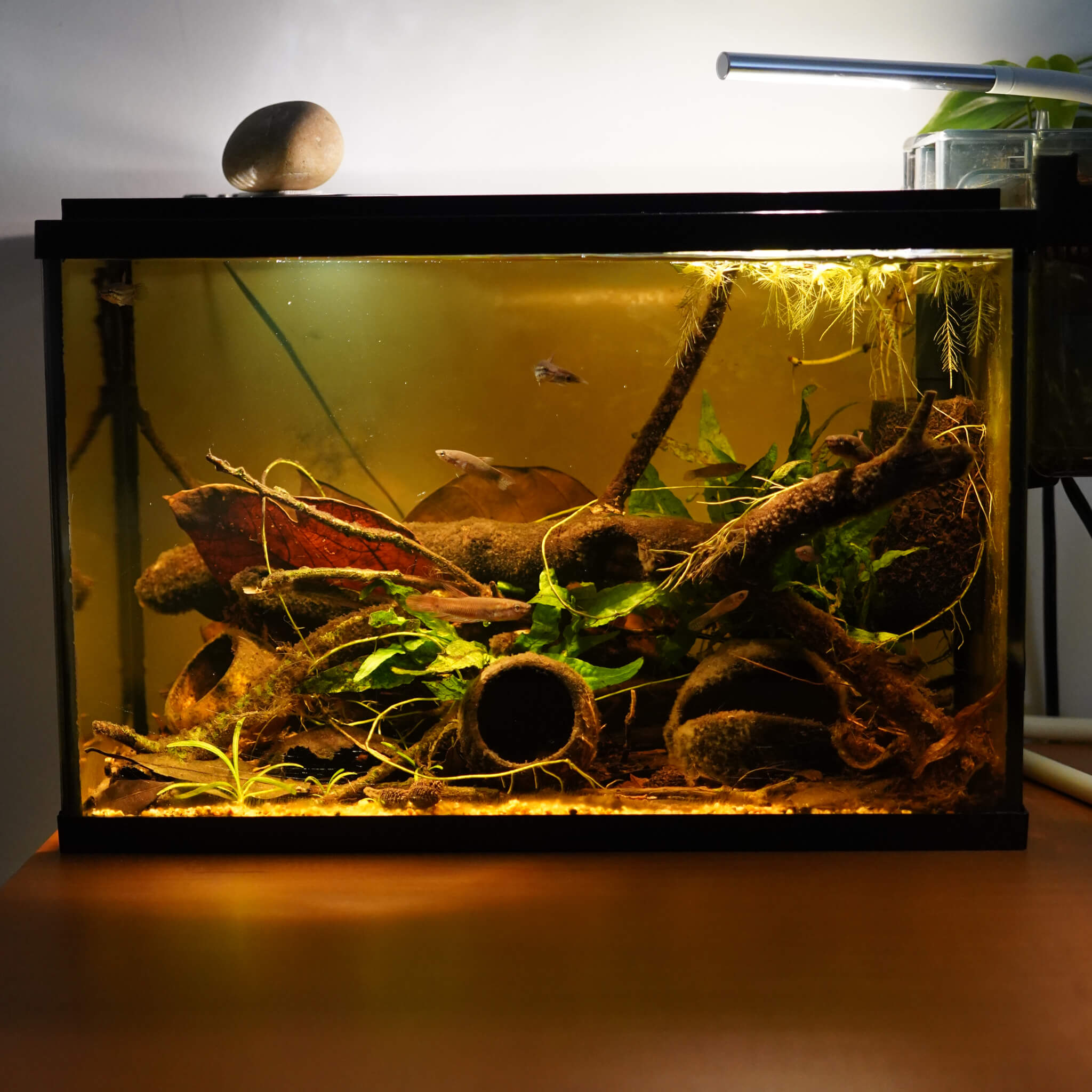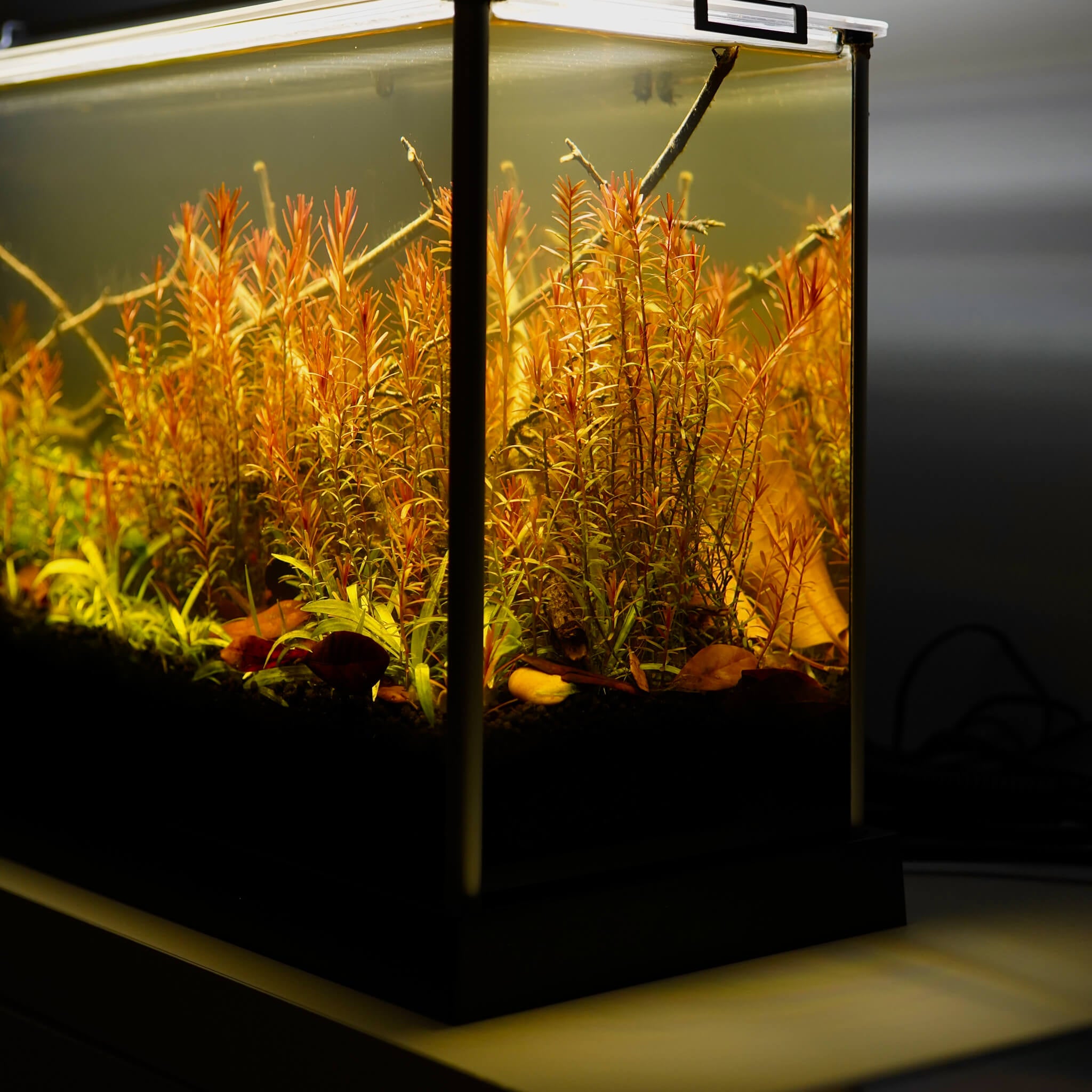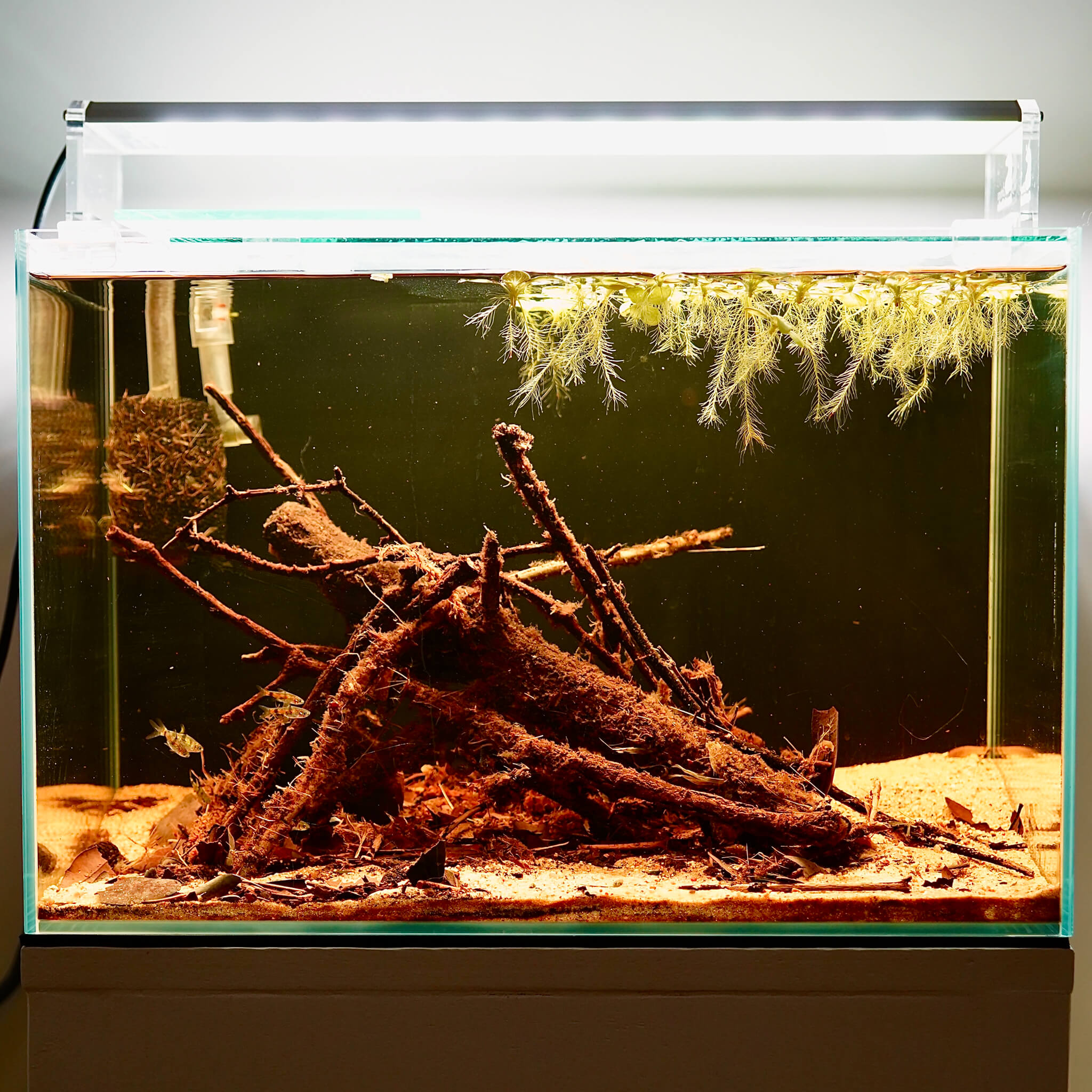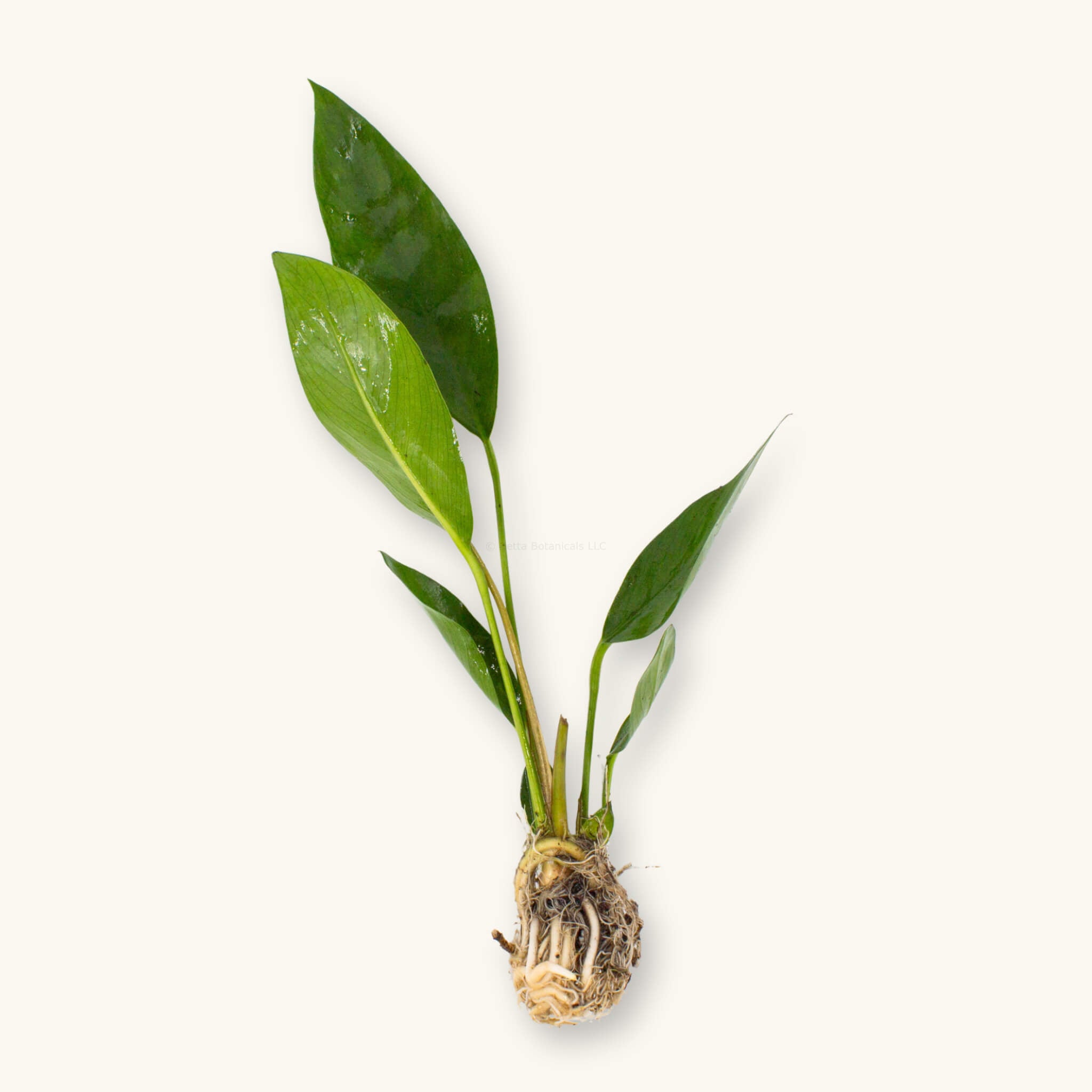
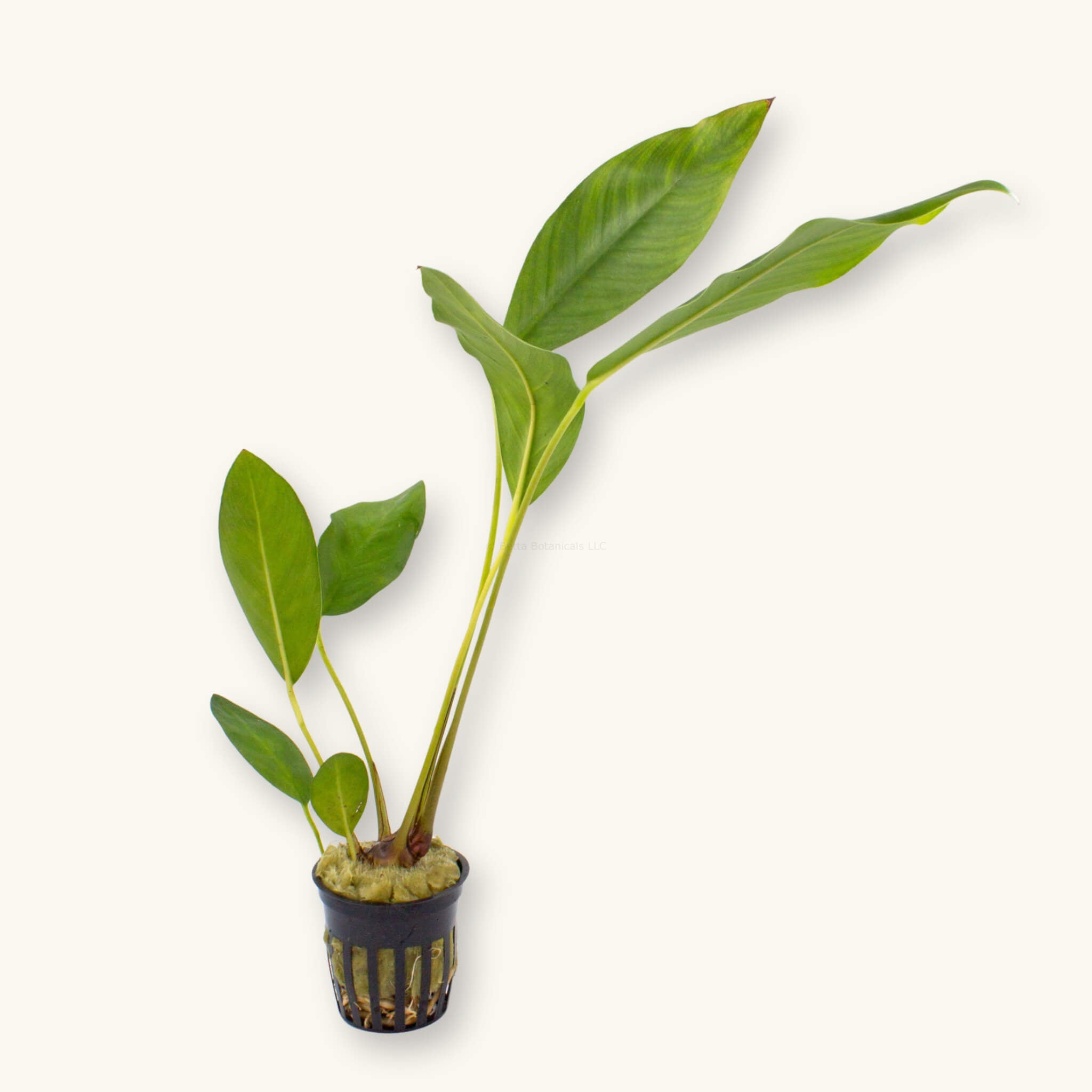
Anubias Congensis
Anubias congensis
Scientific Name: Anubias barteri var. congensis
Common Name: Anubias Congensis, Anubias Congo
Anubias congensis is a hardy West African rhizome plant distinguished by its slightly elongated, lance-shaped leaves and adaptability to a wide range of water parameters. With broader blades than Anubias barteri but not as long as Anubias afzelii, this variety grows higher than most anubias without overwhelming smaller aquariums. Its dark green leaves create a striking contrast against driftwood, botanicals, and leaf litter, making it a natural fit for blackwater, botanical method, and biotope aquariums.
Like all Anubias, Congensis grows from a horizontal rhizome that should never be buried. Instead, it thrives when attached to rocks, wood, or botanicals, where its roots slowly anchor themselves. This attachment style allows aquarists to incorporate it into complex hardscapes, paludariums, or even as an accent tucked between pods and branches. Because it tolerates a wide range of water conditions and light levels, Congensis is considered nearly indestructible once established.
Propagation is straightforward: cut the rhizome into sections, ensuring each portion has several leaves, and secure them separately. Over time, each cutting develops into a new clump, expanding the plant’s coverage across your aquascape. Its thick leaves also resist grazing by most fish and invertebrates, making it a durable long-term plant selection.
Caring for Anubias congensis in Blackwater Aquariums
Care Level: Easy; resilient and highly adaptable
Lighting Requirement: Low; tolerates shaded environments and low light
CO₂: Not required; supplemental CO₂ can increase growth but is unnecessary
Growth Rate: Slow to medium; develops steadily over months
Tank Placement: Foreground to midground; attach to hardscape for best results
Native Habitat: West Africa; shaded forest streams and rivers
Tint Tolerance: Thrives in low to high tannin levels typical of blackwater aquariums
All Plants may contain snails or snail eggs. We keep them in all of our tanks for the benefits they provide. Our blackwater aquarium plants are provided by H2OPlants in adherence to their Shipping and DOA Policies. Your curated selection will arrive in their packaging separate from your botanical & merch orders.

Anubias Congensis
contrast the tint with greenery
While the aesthetic appeal of tinted waters can be quite attractive to us, the recreation of nature—which includes both submerged and emersed plants—is the end goal. Flora helps to improve water conditions, feeding patterns, spawning displays, and territory building.
Aquatic Plant FAQs
DOA Policy
Please ensure that you add a heat pack or cold pack to your orders if temperatures in your area are above 90°F or below 40°F. Click for more info on our DOA Policy.
Are these plants duckweed and snail free?
All Plants may contain snails or snail eggs, small macroinvertebrates, and duckweed. We keep them in all of our tanks for the benefits they provide. We have experienced the presence of small snails, ostracods, daphnia, and beneficial detritus worms.
Are your plants only for tinted water conditions?
Nope! All of our plants will grow perfectly in untinted aquariums that have CO2 and aquasoils, or low-tech planted aquariums. Our selection, though, is optimized for emersed plant growth and low- to medium-tinted water environments.
What is your aquatic plant shipping schedule?
We’re a small company and ship Tuesdays & Thursdays only. Orders placed Wednesday–Sunday → Ship Tuesday. Orders placed Monday–Tuesday → Ship Thursday
Are your plants just for bettas?
Nope. Our aquatic plants are safe for almost all aquariums, terrariums, vivariums, and paludariums. Many of our plants can be grown emersed in filter compartments, vivariums, or incorporated into wabikua.
What are Tannins?
Tannins are natural compounds released by leaves, seed pods, and bark as they decompose in water. They soften water, gently lower pH, and create the characteristic tea-stained tint found in blackwater habitats. But their role goes far beyond color—tannins fuel beneficial bacteria, fungi, and biofilms, which form the foundation of a healthy ecosystem. They also offer mild antifungal benefits and help reduce stress in fish by replicating the natural conditions they’ve evolved in. At their core, tannins are plant-derived antioxidants that connect your aquarium to the same processes at work in wild flooded forests and streams.




